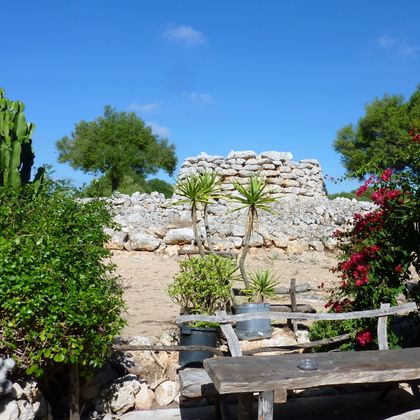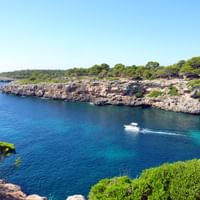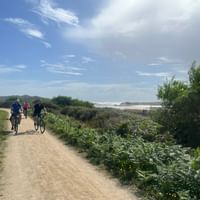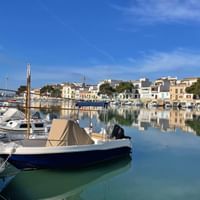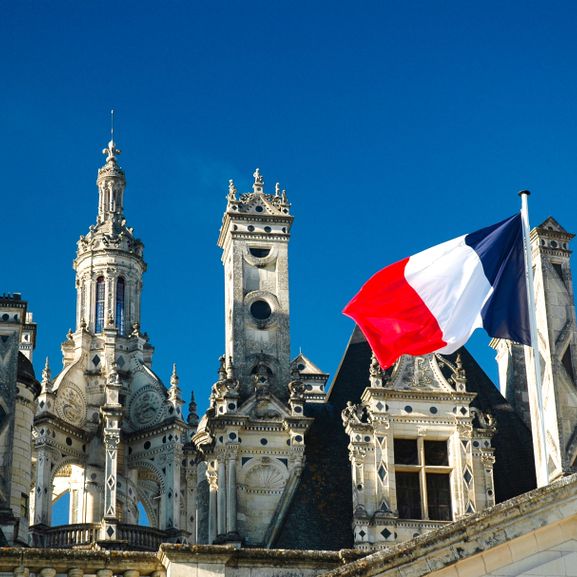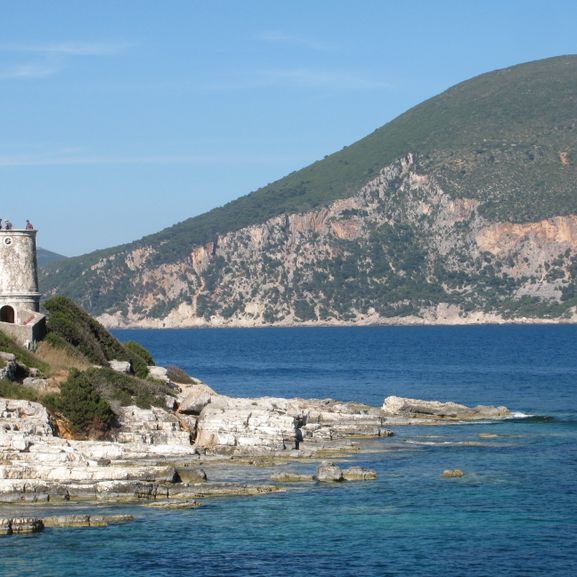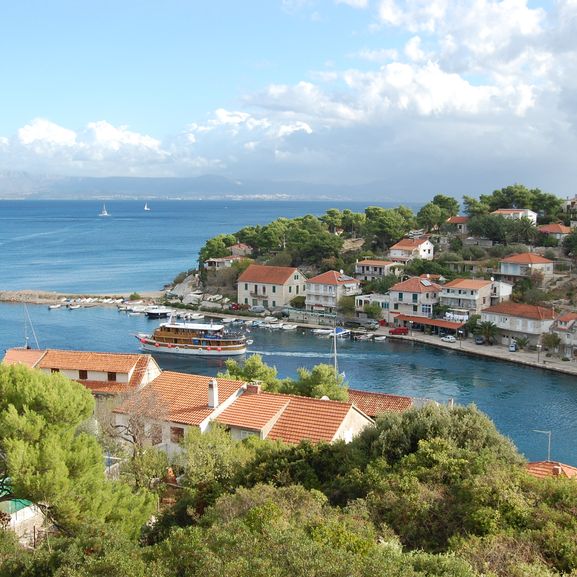The southern European holiday classic surprisingly different
Biking trips in Spain
The coasts of Spain are among the most popular holiday regions in Europe. This is especially true of the notorious Balearic island of Majorca. On our Mallorca tours, you will not only discover the most beautiful coastal sections of the Mediterranean island with white sandy beaches and rugged cliffs, but also the beautiful interior with nature reserves, dragon caves, orange and lemon plantations as well as salt lakes shimmering pink and white. Or you can go on a pilgrimage by bike to the Atlantic coast. The Portuguese Way of St. James from Porto runs halfway through Portugal and halfway through Spain. This way you get to know both countries in a very special way.
España en bici
On the Bicicleta or Bici, bike, discover this great country relaxed from the saddle and in a completely different way than tourists usually do. Depending on the cycle journey, cycle on low-traffic side roads, mostly asphalted business or cycle paths, hiking and stilts, bank or forest paths through more or less hilly terrain.

Viva España
There is no shortage of magnificent attractions. In Mallorca, for example, visit the Cathedral of La Seu in Palma, an impressive building from the 14th to the 16th century. With Gothic, Renaissance, Baroque and Modern elements, it is the most important attraction of the island. The medieval old town of Alcudia is also not to be missed: it is surrounded by a city wall, within which you can stroll past typical Mallorcan houses on cobblestone streets. The ruins of the original Roman fortress Pollentia can also be visited. - Follow the Way of Saint James, the highlight for you is the Cathedral of Santiago de Compostela, capital of Galicia, with Gothic, Baroque, neoclassical and Romanesque elements, which houses the tomb of Saint James. In the square in front of the cathedral, Plaza de Obradoiro, there is also the Raxoi Palace (Town Hall) and the Hostal de los Reyes Católicos with Renaissance and Late Gothic elements, which is said to be the oldest hotel in the world. Santiago's charming old town is a UNESCO World Heritage Site.

Own dances, own musical instruments, own languages
“The” Spanish culture, it doesn’t really exist, and not everyone in Spain dances Flamenco. This art is only cultivated in Andalusia. The country is made up of 17 different autonomous regions, some of which also speak their own languages: Basque, Catalan, Galician and Castilian, the "real Spanish". As different as the languages are the cultural peculiarities. In Mallorca, you may hear Mallorquín, a dialect of the Catalan language, and marvel at the ball de bot. They play strange instruments like the guitarrons, small guitars, flabiols, flutes, bagpipes called Xeremie and small drums called tamborin. The bagpipes can also be found in Galicia. There it is called Gaita and can be founded with Celtic influences. They dance Muiñeira, a Celtiberian, complicated dance in a 6/8 rhythm. And no matter where they are, the siesta is part of the country.

Tapas and Tumbet
In the Mercados, the markets, you can admire the culinary delights that come to the plate all over the country. The best known is certainly the paella, it comes from Valencia and is only real if it is cooked with local water. Tapas were originally intended as a “lid” for alcohol. This has become a kind of culture, an identity-building issue, which can be discussed very well. “Where can you find the best tortilla pieces?” Stroll from one tapas bar to the next and taste the tasty snacks. “Tapear” or “ir de tapas” is the name of this local passion. Here a beer (there is always a tapa), there a viñito, a wine. Spain is also famous for its ham, especially the Jamón Serrano, an air-dried ham from the Spanish mountains, the Sierra. In Mallorca you have to try tumbet, potatoes baked in a clay dish, aubergines, tomatoes and peppers, with garlic, salt and olive oil. In Galicia, the most famous speciality is Polbo á feira, beautiful octopus, and consists of cooked octopus tentacles, served with salt, paprika and olive oil and potatoes cooked in octopusud on wooden plates.

Coasts and mountains
Mallorca is bursting with beautiful coastlines, white sandy beaches and rugged cliffs. Admire the towering mountains of the Serra de Tramuntana, the natural parks of Mondragó, Sa Dragonera and La Albufera with pine forests, orchids and holm oak forests. In addition to an impressive underwater world in the Mediterranean Sea, you will also find freshwater and pink shimmering saltwater ponds, dragon caves and endless orange, lemon and almond plantations. The Spanish Atlantic coast stretches along long beaches. Due to the mild and humid climate, the vegetation there is evergreen. High mountain ranges stand out in the background.

